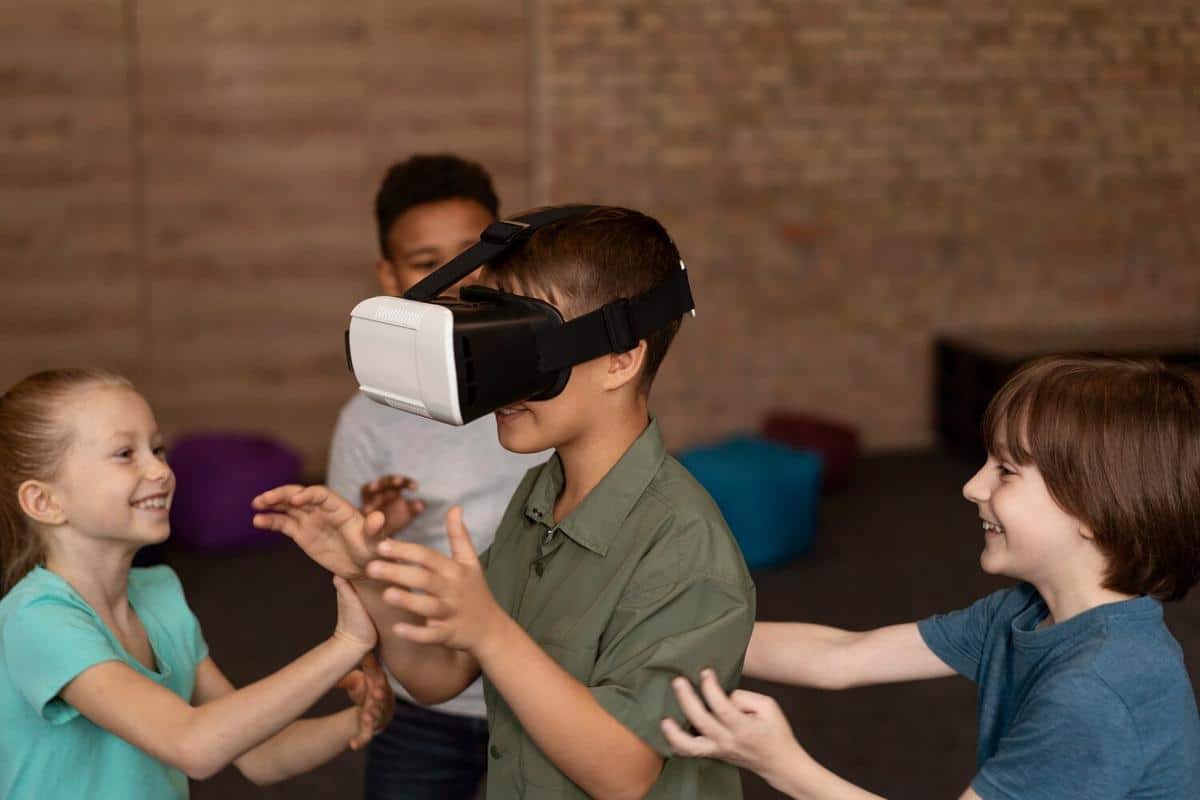
Creating Immersive Learning Experiences with AR
Augmented Reality (AR) is revolutionizing the educational landscape by transforming traditional learning environments into interactive experiences. As educators seek innovative ways to engage students, AR offers a dynamic tool that brings learning to life, making subjects more tangible and accessible.
In the realm of EdTech innovations, Augmented Reality (AR) stands out as a powerful medium to create immersive learning experiences. With its ability to overlay digital information onto the physical world, AR has the potential to engage students in ways that were once unimaginable.
The Impact of AR in Education
According to a report by the World Economic Forum, AR in education is projected to grow significantly, with a potential market value of billions by 2025. This growth is driven by AR’s capacity to enhance learning outcomes by making educational content more engaging and interactive.
Expert Insights
Educational technologist, Dr. Alex Johnson, highlights, ‘AR bridges the gap between theoretical knowledge and practical application, fostering a deeper understanding of complex concepts.’ This sentiment is echoed by many educators who have witnessed firsthand how AR can transform a classroom.
Real-World Applications
Consider a history class where students can explore ancient civilizations through AR. By projecting 3D models of historical artifacts into the classroom, students can interact with these models, gaining insights that traditional textbooks can’t provide. Similarly, in science classes, AR can bring abstract concepts, such as the human body or solar system, into clear focus through interactive simulations.
Statistics Supporting AR’s Efficacy
- Studies have shown that students using AR tools in education have a 35% higher retention rate compared to traditional methods.
- AR-based learning has been found to increase student motivation and engagement by over 60%.
Actionable Tips for Implementing AR
- Start small by integrating AR apps that align with your curriculum objectives.
- Encourage collaboration by using AR tools that promote group activities and discussions.
- Seek feedback from students to continually refine and enhance the AR learning experience.
Comparison: Traditional vs. AR Learning
| Aspect | Traditional Learning | AR Learning |
|---|---|---|
| Engagement | Passive | Interactive |
| Retention | Standard | Enhanced |
| Motivation | Variable | High |
| Content Accessibility | Limited | Expansive |
| Understanding | Theoretical | Practical |
| Feedback | Delayed | Immediate |
| Collaboration | Minimal | Encouraged |
| Cost | Lower | Higher |
FAQs
What equipment is required for AR in classrooms?
Typically, AR requires devices like tablets or smartphones with AR capabilities. Some advanced applications may require specific AR glasses or headsets.
Can AR be used for all subjects?
Yes, AR can be integrated into a wide range of subjects, including science, history, mathematics, and language arts, to enhance the learning experience.
Is AR suitable for all age groups?
AR can be tailored to suit different age groups, from elementary students to higher education, with content complexity adjusted accordingly.
Conclusion
AR is reshaping the educational landscape by providing immersive and interactive learning experiences. By integrating AR into your teaching strategy, you can enrich your curriculum and engage students in meaningful ways. As the technology continues to evolve, educators have an exciting opportunity to harness the power of AR to inspire and educate the next generation of learners.